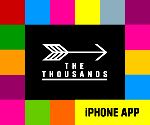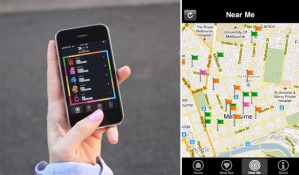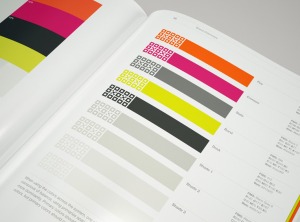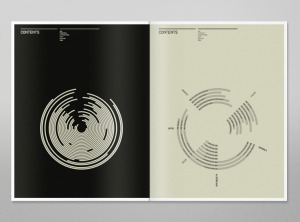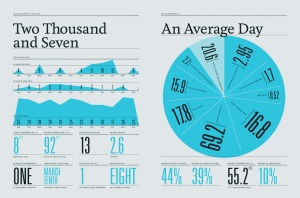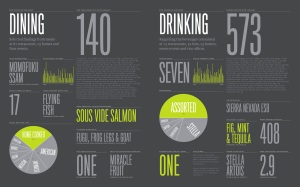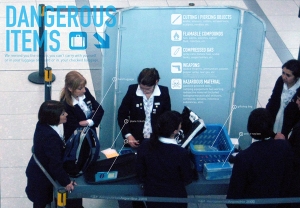As part of our assessment tasks we individually write an analysis reflecting our group, evaluate the project and the design process.
Our group, the little library, I think resulted in a very successful project. We had a very refined concept, an interactive AR application which provided the user an information layer tailored to their needs. This success was due to a number of factors, however I certainly do not believe we always worked perfectly as a group. We were lucky as we had many varying strengths – yet I believe our largest weakness lay in making decisions. I will talk about this later on in the post, as I would prefer to comment on the positives first and dwell upon our success.
The design process of the little library, allowed individual group members to bring their interests and strengths to work. We deemed this highly important through out all stages of the project. When originally assigning roles, which was a requirement at the beginning, I believe we assigned them fairly accurately. For example, I primarily was interested in the user development or the experience our AR system would hold, so therefore focused on persona’s and the visual architecture. Yet my skill set was deemed to also be in the public speaking sphere, so was assigned Presenter.
When working as a group, we often had input from individual’s various interests – we had production input from Martha as she studies industrial design at UTS, dylan was certainly deemed ‘technical support’ but provided a huge array of examples and a distinguished design skill set which he bought to refine most of what we created. Tiia was always extremely organised making sure we all knew what our roles were, she brought a deep knowledge of information architecture from various web sources. Chantel was our researcher and provided great support in this area along with her lateral thinking.
Another aspect to our success is that under pressure we were always able to produce above and beyond. We would assign tasks, and either Tiia or myself would assume the driver/organiser role in setting timelines and making sure people stuck to these. It was important that the division of tasks were even, but that they lay in one’s area of strength. This was vital in making the team produce it’s outcomes, and dealing with the pressure of our deadline.
A task that was always assigned, was the synthesiser – which meant everything was sent to them and they were to correlate the final project (be it for the interim or final) to make sure it was ‘to brand’ with a consistent aesthetic and there were no gaps in our project. If there were, roles were quickly assigned to fill them in.
As mentioned earlier, we certainly had weaknesses, one of which being attendance. I, of which am a large culprit. But I do believe this was handled well by all members, making sure that emails were written or phone calls had and maintaining the workload outside class. The main weakness in my eyes was the groups inability to make decisions without a driver present. I want to stress, that I do deem this group to be fantastic and the final outcome a real success, but unfortunately this weakness was one that was constantly in my mind. I found that if Tiia or I were not present, then not much was done. Certainly many great ideas were thrown out there, yet when a decision needed to be made this was overlooked and we continued to brim with brainstorming. It was frustrating because I wonder where our project would be if we were able to have made decisions a lot earlier on. It was also frustrating having people wait to do work until they had be assigned a role. Sorry I do not mean to gripe, as I mentioned the group did work really well. This was however certainly a weakness.
Working as a team as always has it’s ups and downs. With each round of group work you learn more about yourself, how to work with others, where your strength lies and how to work on your weaknesses. I often felt like I was bossy assuming the driver role when needed, but do believe that this was important to make final decisions.
Our project achieved our mission of creating a platform which enhanced the social aspects of the library and providing a digital life for a book which portrayed it’s history not just it’s content. Further development can certainly be made however, and I hope that those who are willing, and I certainly am, can be involved in the processes. Development into the way-finding aspect, the random shake-n-shuffle for the gestural interface, giving the user an option of how to visual represent the application are all options we would like to develop more. I would like to be involved at all stages, particularly the validation and customer testing stages.
I have made some good friends, great connections and a design I am proud of. The strengths of our groups certainly outweighed the weaknesses and our final presentation’s comments are a tribute to this. Well done team.
LAB 8; was a great class and was what I deemed it to be at the beginning of the project. Ian and Kier were great mentor’s to have as they provided us with great feedback at multiple junctions of the project. But also provided great exposure to the industry, not only with those that came and spoke to us or the field trips we were taken on, but also the examples shown.
I do believe that their was inconsistency with assignments – especially the blog posts, as at one stage we were only to have them marked at the end without any criteria of weekly postings being noted, then their became specifics of which were to be marked. But I believe this was truly as it was the first time the class was run.
I really enjoyed learning about Augmented Reality and is one that I hope to pursue. I have been in contact with Danielle Lee, who’s contact details I passed on to a colleague at my internship and hopes to do work with in the future. We have also spoken about the possibility of an internship down the track in the validation stages of tiger spike’s process. I hope this eventuates into something, but without LAB 8 I would not have heard her inspirational talk or seen the process they go through.
Thank you once again Ian and Kier.






